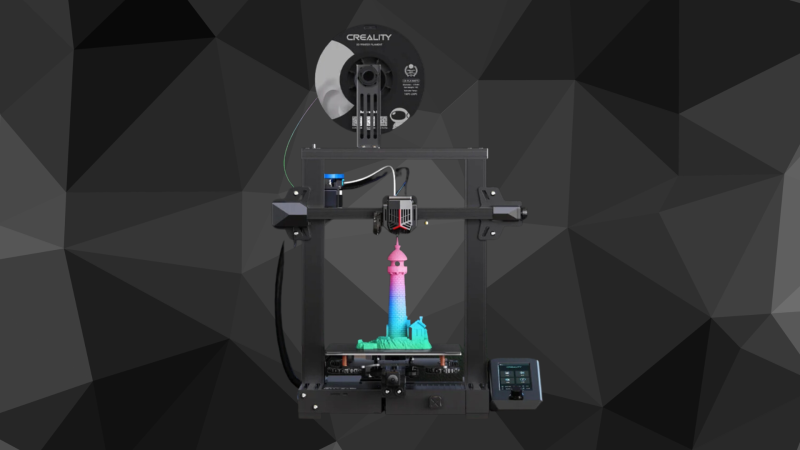Unleashing Creativity and Imagination: The Impact of 3D Printing Across Industries

Categories :
With advancements in materials, precision, and speed, 3D printing is taking up a more prominent role in manufacturing, healthcare, aerospace, and even culinary art. Advancements in the area, including efficiency, cost, materials and accessibility, are reshaping the way we create and innovate in the modern world. How are top brands innovating in 3D printing technology, providing unique and customised solutions worldwide?
What was once a futuristic concept portrayed in science fiction novels and movies, 3D printing has evolved into a transformative technology with practical applications across industries. Popular brands, like Formlabs, Stratasys, Carbon, and Creality, have played a pivotal role in pushing the boundaries of the technology and driving its adoption across various sectors.
A recently launched platform under the flagship of Dinis Guarda YouTube Channel, Techabc features the latest technological trends, insights, and inventions. The first episode dedicated to 3D printing highlighted some impressive numbers about 3D printing:
The global 3D printing market was valued at $16.75 billion in 2022 and is predicted to grow at a CAGR of 23.3% from 2023 to 2030 to reach a value of $83.9 billion. In 2021, roughly 2.2 million units of 3D printers were shipped, which is expected to reach 21.5 million units by 2030.
3D Printing: History and Evolution
3D printing, also known as additive manufacturing, is emerging as a groundbreaking technology with the potential to transform industries and reshape the way we produce objects.
The concept of 3D printing dates back to the 1980s when Charles Hull, an American engineer, developed a technique called Stereolithography (SLA). Hull co-founded 3D Systems, one of the earliest companies to pioneer 3D printing technology. Over the years, other additive manufacturing methods, such as Selective Laser Sintering (SLS) and Fused Deposition Modeling (FDM), were introduced, broadening the capabilities of 3D printing.
In the late 2000s, there was a significant surge in interest and investment in 3D printing technology. According to the 2020 data from the European Patent Office, the European patent applications related to 3D printing, which has been growing at a rate of 36%. Advancements in materials, printing speed, and precision expanded the potential of this technology across diverse sectors:
Bioprinting Breakthroughs: The ability to print human tissues and organs using 3D bioprinting has opened up new possibilities in medicine. Researchers have successfully printed functional tissues, such as blood vessels and heart patches, paving the way for potential organ transplants in the future.
Aerospace and Automotive Applications: Aerospace and automotive industries have embraced 3D printing for rapid prototyping, lightweight component manufacturing, and even producing critical engine parts. This has led to reduced costs and improved efficiency in these sectors.
Construction 3D Printing: The 3D printing technology has made significant strides in the construction industry, revolutionising traditional building methods and paving the way for more sustainable and efficient construction practices.
ICON, a Texas-based construction technology company, has developed a 3D printer known as the "Vulcan", capable of constructing entire houses using a proprietary blend of concrete. The Vulcan printer has been used to build affordable homes in underserved communities, addressing housing challenges and demonstrating the scalability of 3D printing in construction.
Apis Cor, a company specialising in mobile 3D printers, are fabricating entire structures on-site, reducing construction time and minimising waste. Apis Cor's technology has been employed in various projects worldwide, from small-scale houses to larger commercial buildings.
Food Printing: The development of food-grade materials has led to the advent of 3D food printing. From chocolates to customised cakes, chefs and food manufacturers are exploring the creative and culinary potential of this technology.
Present-Day applications of 3D printing
The present-day applications of 3D printing have expanded far beyond rapid prototyping, reaching into diverse industries and revolutionising traditional manufacturing processes. One of the significant advantages of 3D printing lies in its ability to create highly customised, complex, and functional parts, making it invaluable across a wide range of sectors.
In the aerospace industry, 3D printing has been instrumental in producing lightweight and intricately designed components. GE Aviation, for instance, used 3D printing to create a fuel nozzle for its LEAP aircraft engine. This design optimisation reduced the weight and enhanced fuel efficiency, demonstrating the impact of 3D printing in aerospace advancements. Voxeljet AG and SLM Solutions Group AG are among the companies at the forefront of providing 3D printing solutions to the aerospace sector, enabling the production of intricate parts with high precision.
The healthcare sector has embraced 3D printing for various applications, including patient-specific medical devices, surgical models, and prosthetics. According to a report by Statista, 113 hospitals had centralised 3D facilities for point-of-care manufacturing in 2011, compared with just three in 2010. Shapeways Holdings, Inc., Materialise NV, Velo3D, Inc., Markforged Holding Corporation, and Renishaw plc are among the leading companies in medical 3D printing that provide patient-specific products like the customised 3D printed prosthetics, pre-surgery visualisation models, and medical devices.
In the automotive industry, 3D printing has been employed for rapid prototyping, producing concept models, and manufacturing end-use parts. Companies like BMW and Ford have incorporated 3D printing to develop complex components and reduce the development time of new vehicle models. Desktop Metal, Inc., Proto Labs, Inc., and Xerox Holdings Corporation are some of the companies pushing the boundaries of 3D printing technology in the automotive sector.
The technology has also found its way into educational institutions, empowering students and educators to explore STEAM subjects in a hands-on manner. Creality's user-friendly 3D printers have been used in classrooms to bring concepts to life, enabling students to design and create tangible objects. General Electric Company has also been actively involved in promoting 3D printing education and research.
Moreover, fashion designers are leveraging 3D printing to create unique and avant-garde pieces that challenge traditional garment production. Brands like Adidas and Nike have experimented with 3D-printed footwear, offering customised and lightweight shoes for athletes. Proto Labs, Inc. and Voxeljet AG have also been involved in providing 3D printing solutions to the fashion industry.
From jewellery to home decor, 3D printing is influencing the production of consumer goods. Companies like Shapeways enable customers to design and order custom 3D-printed products, giving rise to a new era of personalised consumer experiences. Prodways Group SA is another prominent player in the consumer goods sector, offering a wide range of 3D printing solutions for various applications.
3D printing: Future trends
As researchers and engineers explore new possibilities, new materials with enhanced properties, such as greater strength, flexibility, and thermal resistance are the future trends. Innovations in metal 3D printing, biomaterials, and composites will open new frontiers in aerospace, healthcare, and automotive sectors, enabling the production of more durable and functional end-use parts. Eco-friendly and sustainable materials, also, are likely to gain prominence, aligning with the growing global focus on environmentally conscious manufacturing practices.
"The next episode of 3D printing will involve printing entirely new kinds of materials. Eventually we will print complete products: circuits, motors, and batteries already included. At that point, all bets are off." - Hod Lipson, Director of Columbia University's Creative Machines Lab.
The future of 3D printing lies in its potential to enable mass customisation and personalisation on a large scale. As technology advances, we can expect 3D printers to become more accessible, efficient, and cost-effective, allowing businesses to produce tailor-made products at scale.
Consumers will have the ability to customise everything from apparel and footwear to consumer electronics, delivering a unique and individualised experience. Industries like healthcare, will leverage 3D printing to create patient-specific medical devices and implants, optimising treatment outcomes. This trend will not only transform the way products are manufactured and consumed but also reshape supply chains, driving a shift towards more agile and responsive manufacturing models.

Pallavi Singal is the Vice President of Content at ztudium, where she leads innovative content strategies and oversees the development of high-impact editorial initiatives. With a strong background in digital media and a passion for storytelling, Pallavi plays a pivotal role in scaling the content operations for ztudium’s platforms, including Businessabc, Citiesabc, and IntelligentHQ, Wisdomia.ai, MStores, and many others. Her expertise spans content creation, SEO, and digital marketing, driving engagement and growth across multiple channels. Pallavi’s work is characterised by a keen insight into emerging trends in business, technologies like AI, blockchain, metaverse and others, and society, making her a trusted voice in the industry.









